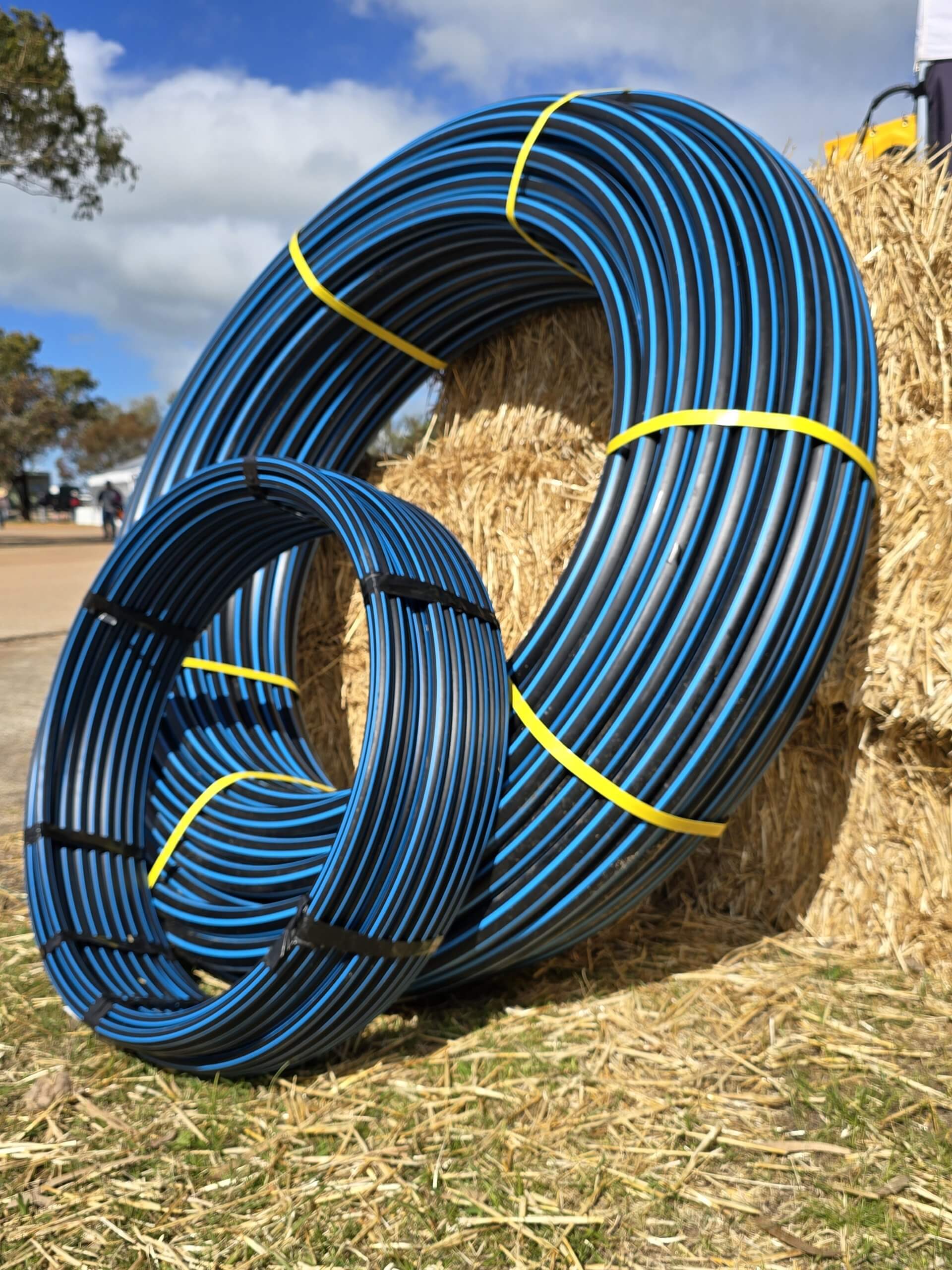Rural vs. Metric HDPE Pipe: Sizing, Standards & Key Differences
There is often confusion about when to use Rural HDPE pipe or Metric HDPE pipe. The truth is, both serve important purposes in very different settings. They might look similar, and in our case, both are made from high-quality PE100, but their standards, dimensions, and specific applications set them apart. Here’s how to choose the right HDPE pipe for your project

Rural HDPE Pipe (PN8): Built for the Bush
Rural HDPE pipe is used primarily for farm water systems, stock troughs, gravity-fed irrigation, and low-pressure pump lines. It is typically installed on private properties where ease of use and flexibility are important.
The key difference lies in sizing: Rural pipe follows rural OD (imperial) dimensions, not the metric OD system used for mains. It connects using rural compression or push-fit fittings, which makes installation fast and simple without welding.
Rural pipe is tough, affordable, and simple to install—ideal for agricultural and low-pressure applications where practicality and cost efficiency matter most.
Metric HDPE Pipe (PN8): Made for Infrastructure & Precision
Metric HDPE pipe is used for town water supply, industrial piping, plumbing, and major infrastructure projects. It is designed for regulated or municipal systems where compliance with AS/NZS 4130 standards is essential.
Metric HDPE is more precise and robust, requiring accurate fittings and often electrofusion or butt fusion welding to achieve strong, watertight connections. These systems are built to handle higher pressure and provide long-term performance in demanding environments.

Choosing the Right HDPE Pipe for the Job
If you are installing a farm trough line or paddock water supply, Rural PN8 is the ideal choice. It is durable, cost-effective, and quick to connect using rural compression fittings.
If you are connecting a house to mains water or developing a pressure reticulation system, Metric PN8 is the correct option. It provides the necessary precision and compliance, ensuring your project meets regulatory standards and delivers consistent performance.




